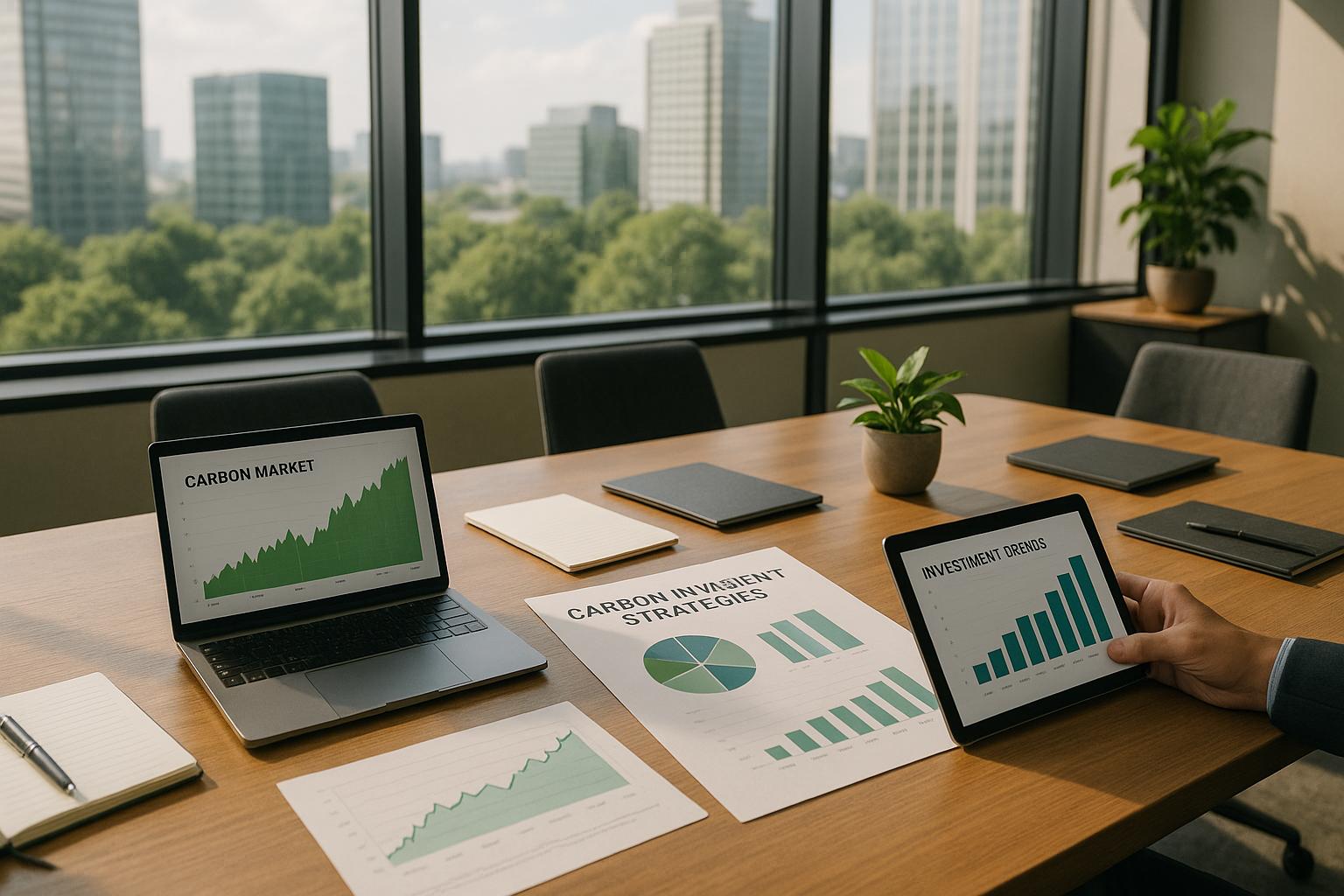5 Essential Resilience KPIs to Make Your Company Crisis-Proof
How do you make your company crisis-proof? The answer lies in measurable resilience KPIs. Companies...
By: Johannes Fiegenbaum on 10/15/25 4:52 PM

The development of carbon markets is unprecedented – an industry equally characterized by uncertainties, urgency, and far-reaching impacts. In a world where sustainability is increasingly becoming the decisive factor for competitiveness, companies and investors must understand both short-term risks and long-term opportunities. This article illuminates the core themes from discussions with leading experts and offers practical insights for managers and decision-makers in Germany.
Carbon markets are no longer a niche; they are increasingly viewed as a "new commodity class" that could revolutionize how companies handle emissions. According to the World Bank's Carbon Pricing Initiative, global carbon pricing mechanisms now cover approximately 23% of global greenhouse gas emissions, demonstrating the rapid mainstream adoption of these instruments. Yet many companies still hesitate to enter these markets. The reason? A lack of confidence, clear regulation, and unified understanding of the quality and value of carbon credits.
A central theme of the discussion was the so-called "Confidence Gap" – the problem that many companies and investors hesitate to invest large sums in carbon markets because uncertainties prevail on both the demand side (e.g., how such credits are valued) and the supply side (e.g., quality and availability). Research from McKinsey & Company suggests that voluntary carbon markets could grow 15-fold by 2030, reaching $50 billion annually, but this growth depends on addressing quality and transparency concerns. But this is precisely where a potential opportunity lies for early investors: those who understand the mechanisms of these markets early and develop strategies can secure long-term competitive advantages.
For CFOs and financial executives, the central question remains: Is it worth it? Many companies face the challenge of connecting sustainability goals with clear financial arguments. The International Energy Agency's Net Zero by 2050 roadmap indicates that achieving global climate goals will require annual clean energy investment of $4 trillion by 2030, highlighting the scale of financial commitment needed. CFOs want to know exactly:
A key strategy is to directly link carbon investments with corporate objectives – whether through savings from internal abatement measures or through competitive advantages with customers.
The discussion highlighted the importance of a robust due diligence framework to evaluate carbon credits as an alternative investment form. The Task Force on Climate-related Financial Disclosures (TCFD) framework provides essential guidance for assessing climate-related financial risks and opportunities. Two important aspects were emphasized:
Another theme that dominated the discussion was the upcoming implementation of the EU Due Diligence Directive. This regulation could be a catalyst for many companies to invest more heavily in carbon markets. The directive, which affects approximately 13,000 EU companies and 4,000 non-EU companies operating in the EU market, represents one of the most comprehensive corporate sustainability regulations globally. Why? Because the directive requires companies to examine their entire supply chain for sustainability risks.
For companies in Germany, this means they must keep an eye on not only their own emissions but also those of their suppliers and partners. Carbon credits could play a key role here in meeting regulatory requirements while securing competitiveness.
A central point in portfolio construction is the use of so-called Marginal Abatement Costs (MAC). They help companies evaluate which emission reduction measures offer the highest returns or lowest costs. According to IPCC Working Group III analysis, the cost of many mitigation options has decreased substantially, with solar energy costs falling by 85% and wind energy by 70% between 2010-2019. Modern portfolio management should combine the following elements:
To advance the debate in companies, investment committees should ask these five questions:
The discussion pointed to several trends that could shape carbon markets in the coming years:
Carbon markets are neither simple nor without risks. But they could be a crucial lever for achieving emission targets while opening up new business opportunities. The Paris Agreement's Article 6 mechanisms provide the international framework for carbon market cooperation, offering pathways for companies to contribute to global climate goals while achieving business objectives. For companies in Germany that focus on sustainability, innovation, and long-term resilience, this presents a strategic opportunity.
Now is the time to weigh risks and opportunities – and take bold steps. Carbon markets could prove to be one of the most significant growth markets of the coming decade. Those who invest today actively shape the future.
Source: "CMS 24 | Confidence to set your carbon credit strategy" - Sylvera, YouTube, Jun 2, 2025 - https://www.youtube.com/watch?v=JHwA27lF7d8
Use: Embedded for reference. Brief quotes used for commentary/review.

ESG & sustainability consultant specializing in CSRD, VSME, and climate risk analysis. 300+ projects for companies like Commerzbank, UBS, and Allianz.
More aboutHow do you make your company crisis-proof? The answer lies in measurable resilience KPIs. Companies...
This guide provides sustainability managers with an in-depth roadmap for setting near- and...
More and more companies are under pressure to credibly demonstrate their sustainability...